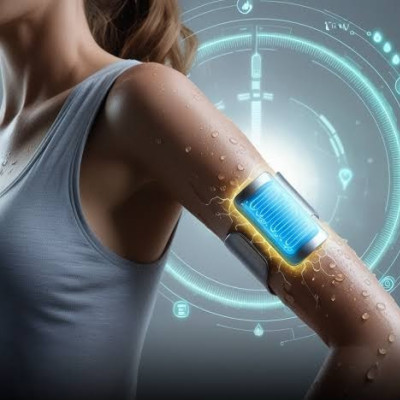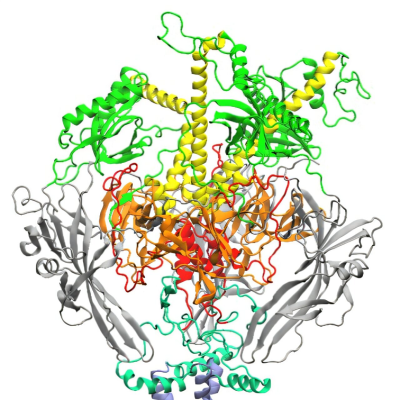The field of nanodevices has been evolving for years, especially in food safety and quality applications. This study, however, takes a turn into field-effect transistors (FETs) and a platform designed to detect biological markers and convert them into digital signals for rapid at-home diagnostic testing, according to Davood Shahrjerdi, PhD, whose research focuses on nano-engineered integrated systems, with Elisa Riedo, PhD, and Giuseppe de Peppo, PhD, from NYU Tandon.
Biofunctionalization strategy
With a team, they published a paper September 24 detailing how they engineered nanoscale thermal biofunctionalization in the development of a nanodevice called the NanoBioFET platform. Successful electronic sensing experiments for detecting SARS-CoV-2 targets, for example, confirmed feasibility of their functionalization strategy with FET biosensors, the team said.
The research demonstrates how tiny FET devices can be adapted to function as biosensors, detecting specific pathogens or biomarkers in real time, without the need for chemical labels or lengthy medical laboratory procedures.
A key outcome of the project is that it proposes a paradigm shift in FET biofunctionalization. The shift involves using thermal scanning probe lithography (tSPL), Riedo's area of specialty, at a resolution as fine as 20 nm, with a thermochemically sensitive polymer that can be spin-coated on fully fabricated FET chips.
"At present, functionalization of FET biosensors commonly involves the drop-casting method without any or limited spatial selectivity, which must be specialized for a given FET material," the authors wrote for the journal Nanoscale of the Royal Society of Chemistry.
FETs configured as biosensors serve as a suitable platform, compatible with modern semiconductor manufacturing, for label-free rapid sensing by converting interactions between target analytes and surfaces into real-time electrical signals, they explained.
Graphene FET sensors
With the nanoscale material graphene central to the team's experiment, the researchers said there is an unmet critical need for FET material independent and scalable surface chemistry fabrication strategy.
"Existing functionalization methodologies are largely vulnerable to microscopic and nanoscopic surface non-idealities such as contaminations and variations in defect species of the surface," wrote Shahrjerdi and colleagues for Nanoscale.
Another limitation of existing functionalization approaches pertains to the development of surface chemistry processes that are FET-material independent. For instance, attaching a given antibody or aptamer to a graphene film will involve different processing steps compared to an oxide film.
Instead, the team proposed a chemical modification process strategy that they said would allow modifying each FET on a chip, on-demand, with distinct pathogen and biomarker-specific bioreceptors, such as antibodies and aptamers. The FET-based sensors could detect a wide variety of pathogens on a single chip, according to Shahrjerdi and colleagues.
Multiple pathogens
"Crucially, we demonstrate the spatially selective multiplexed functionalization capability of this method by immobilizing different types of bioreceptors at prescribed locations on a chip with sub-20 nm resolution, paving the way for massively parallel FET detection of multiple pathogens," the team wrote.
The key to this advance is the effective function of the polymethacrylate carbamate cinnamate (PMCC) polymer as a capacitor between the surface-anchored bioreceptors and the buried FET sensors, allowing the electronic detection of interactions between target analytes and specific bioreceptors, according to the team.
Moreover, antibody- and aptamer-modified graphene FET (gFET) sensors demonstrated ultrasensitive and selective sensing performance when functionalized using the NanoBioFET platform, the researchers said. The tSPL-functionalized gFET sensors achieved a detection of a minimum measured concentration of 3 aM of SARS-CoV-2 spike proteins and 10 human SARS-CoV-2 infectious virus particles per mL, as well as selectivity against human influenza A (H1N1) live virus, Shahrjerdi and colleagues noted.
Testing the platform
The platform was tested through sensing experiments tailored for the detection of the SARS-CoV-2 virus because of the commercial availability of bioreceptors for this virus, including different antibodies and aptamers.
The team said a key benefit of the NanoBioFET platform is its generalizability to various FET materials from silicon to graphene. The platform is also compatible with commercial semi-conductor manufacturing for producing [complementary metal–oxide–semiconductor] CMOS chips that can contain many FETs (thousands to millions), where each FET or a group of FETs can be modified for detecting a specific target pathogen, according to Shahrjerdi and colleagues.
"To this end, we note that the tSPL process could be parallelized with the use of hot probes arrays, while the scanner head could work in parallel with picoliter piezo-type printing, decreasing the nanopatterning times, which are present about 10 minutes per FET," the authors continued.
There is opportunity in the fact that modern semiconductor manufacturing can integrate billions of sub-100 nm size FETs into functional microchip products. If successful, the platform could open the door to new applications for FET-based sensor technologies in drug discovery and clinical diagnostics, according to the researchers.
Future studies will focus on enabling multiplexed FET sensing using the methodology.
Biological threats and more
The developments are a result of a partnership in August 2022 between Brooklyn biotech company Mirimus and Tandon’s researchers. Mirimus was established in 2010 by co-founder and CEO Dr. Prem Premsrirut with the goal of advancing RNA interference technology. A December 12 Tandon blog, however, noted that LendLease, a multinational construction and real estate company based in Australia, is also involved.
“Companies such as Lendlease and other developers involved in urban regeneration are searching for innovative solutions like this to sense biological threats in buildings,” said Alberto Sangiovanni Vincentelli of UC Berkeley, a collaborator on the project. “Biodefense measures like this will be a new infrastructural layer for the buildings of the future.”
The hope is that biosensing microchips could eventually identify multiple diseases from a single cough or air sample and be produced at scale. They would offer an alternative to traditional color-based chemical diagnostic tests such as at-home pregnancy tests, according to Shahrjerdi via the Tandon blog.
“This advanced approach enables faster results, testing for multiple diseases simultaneously, and immediate data transmission to healthcare providers," Shahrjerdi said.
Read the original article on LabPulse.







